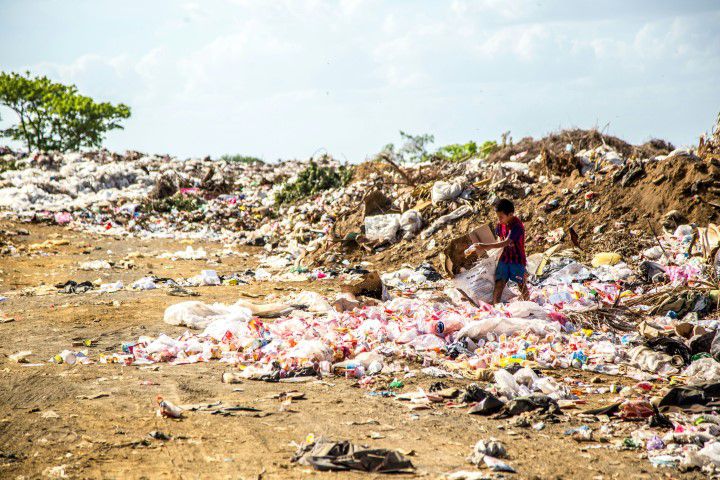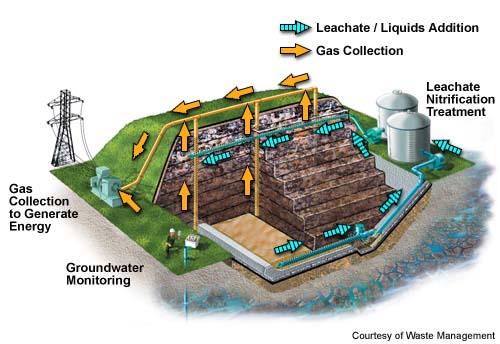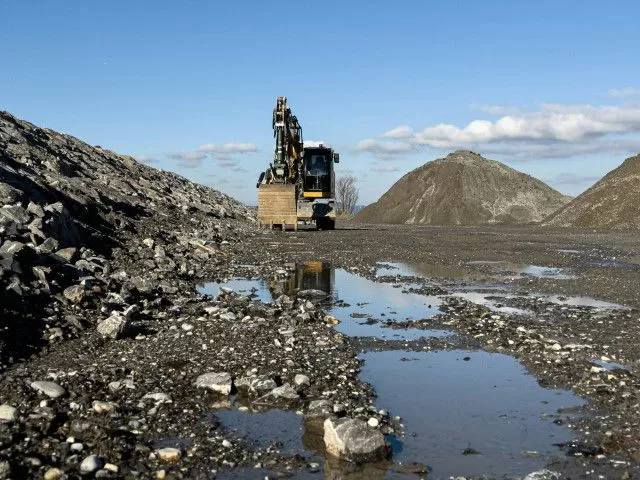
When you think of landfills, the image that probably comes to mind is not exactly high-tech. More likely, it’s a sprawling, smelly mountain of garbage slowly decomposing under the sun. However, the future of landfills is shaping up to be something entirely different. Thanks to groundbreaking technological innovations, waste management is undergoing a transformation that could turn landfills from environmental liabilities into resources that benefit society. From smart sensors that monitor waste to advanced bioreactors that generate energy, let’s explore how technology is revolutionizing the world of waste management.
Smart Landfills: The Internet of Trash
The Internet of Things (IoT) has been making waves in industries from healthcare to agriculture, and now, it’s coming to waste management. By embedding smart sensors in landfills, waste management companies can monitor conditions in real-time, optimizing operations and minimizing environmental impact.
1. Real-Time Monitoring
One of the biggest challenges in managing a landfill is knowing what’s happening beneath the surface. Gas emissions, leachate levels, and temperature changes are all critical factors that need to be monitored to prevent environmental hazards.

With smart sensors, these parameters can be tracked in real-time, allowing for quicker responses to potential issues. For example, if methane levels spike unexpectedly, managers can take immediate action to vent the gas safely, reducing the risk of explosions or uncontrolled emissions.
2. Predictive Analytics
But the benefits of smart landfills don’t stop at real-time monitoring. By analyzing the data collected by sensors, waste management companies can predict future trends and optimize their operations accordingly. Predictive analytics can forecast when a landfill will reach capacity, identify areas that are prone to leachate leaks, and even suggest the most efficient waste compaction strategies. This not only helps in managing the landfill more effectively but also extends its lifespan, delaying the need for new landfills and conserving space.
Bioreactor Landfills: Accelerating Decomposition
Traditional landfills are designed to keep water out, slowing down the decomposition process and trapping waste for decades, if not centuries. But what if we could speed up decomposition, turning waste into usable products in a fraction of the time? Enter bioreactor landfills, a technology that could revolutionize how we think about waste disposal.
1. Enhanced Decomposition
Bioreactor landfills are engineered to promote the rapid breakdown of organic waste by adding moisture and sometimes air to the landfill. This creates the ideal conditions for microorganisms to do their work, breaking down waste much faster than in a conventional landfill.

As a result, a bioreactor landfill can stabilize within a decade, compared to the hundreds of years it might take for a traditional landfill to do the same. This accelerated decomposition not only reduces the volume of waste but also minimizes the long-term environmental risks associated with landfills.
2. Energy Production
One of the most exciting aspects of bioreactor landfills is their potential to generate energy. As organic waste decomposes, it produces methane, a potent greenhouse gas that, when captured, can be used as a renewable energy source. Some bioreactor landfills are equipped with systems to collect this methane and convert it into electricity or heat, effectively turning trash into treasure. This not only reduces the landfill’s carbon footprint but also provides a valuable resource that can help power local communities.
Plasma Gasification: Turning Waste into Fuel
Another futuristic technology that’s gaining traction in the waste management industry is plasma gasification. This process uses extreme heat, generated by plasma torches, to convert waste into syngas—a mixture of hydrogen and carbon monoxide that can be used to produce electricity, biofuels, or even new materials.
1. Zero Waste to Landfill
Plasma gasification has the potential to eliminate the need for landfills altogether. By converting waste into syngas, the process leaves behind only a small amount of inert slag, which can be used in construction materials. This means that virtually no waste ends up in a landfill, making plasma gasification a true zero-waste solution. Moreover, the process can handle a wide range of materials, from household garbage to hazardous waste, making it an incredibly versatile technology.
2. Sustainable Energy
The syngas produced by plasma gasification can be used in various ways, but one of the most promising applications is as a fuel for power generation. When burned in a gas turbine or engine, syngas produces electricity with a lower carbon footprint than traditional fossil fuels. This makes plasma gasification not only a waste management solution but also a contributor to sustainable energy production. In fact, some companies are already exploring the possibility of using plasma gasification to power waste-to-energy plants, further integrating waste management into the circular economy.
Robotics and AI: The Future of Sorting
One of the biggest challenges in recycling and waste management is sorting materials effectively. Traditional sorting methods are labor-intensive, error-prone, and often result in contaminated recycling streams that end up in landfills. But with advances in robotics and artificial intelligence (AI), that’s all changing.
1. Automated Sorting
Robots equipped with advanced sensors and AI algorithms are now being deployed to sort waste with incredible accuracy and speed. These robots can identify and separate different types of materials, such as plastics, metals, and paper, more effectively than human workers. By automating the sorting process, these robots not only increase the efficiency of recycling facilities but also reduce contamination rates, ensuring that more materials are successfully recycled rather than sent to landfills.
2. AI-Driven Optimization
AI isn’t just helping with sorting; it’s also optimizing the entire waste management process. From collection routes to processing strategies, AI can analyze vast amounts of data to find the most efficient and cost-effective ways to manage waste. For example, AI can predict which neighborhoods will generate the most waste on a given day, allowing for more efficient collection schedules. This reduces the need for additional landfill space and cuts down on the carbon emissions associated with waste transport.
Circular Landfills: A Closed-Loop System
Perhaps the most forward-thinking concept in the future of landfills is the idea of circular landfills. Instead of being the end point for waste, circular landfills are designed to be part of a closed-loop system where materials are continuously recycled, repurposed, or converted into energy.
1. Resource Recovery Parks
Some forward-looking municipalities are already developing “resource recovery parks,” which are essentially circular landfills. These facilities combine traditional landfill operations with recycling centers, composting facilities, and waste-to-energy plants.

The goal is to extract as much value as possible from waste before it’s buried, turning the landfill into a hub of resource recovery rather than a final resting place for garbage.
2. Designing for the Future
Circular landfills also emphasize the importance of designing products and packaging with their end-of-life in mind. By encouraging manufacturers to create items that are easier to recycle or decompose, circular landfills can reduce the amount of waste that needs to be managed in the first place. This not only extends the life of the landfill but also aligns with broader sustainability goals, creating a more resilient and resource-efficient society.
Conclusion
The future of landfills is looking brighter than ever, thanks to technological innovations that are transforming waste management. From smart sensors and bioreactor landfills to plasma gasification and AI-driven sorting, these advancements are not only reducing the environmental impact of landfills but also unlocking new opportunities for resource recovery and energy production. As these technologies continue to develop, we can look forward to a future where landfills are no longer a burden on the environment but a valuable part of a sustainable, circular economy.
Sources

Peter Lars has long been an advocate for reusing and recycling whenever you can. He has a passion for writing about every related to landfills and garbage dumps, and unlikely as that may seem.
Landfill Art: How Artists are Turning Trash into Creative Masterpieces
In a world where waste is often viewed as nothing…
Plastic Perils: How Single-Use Plastics are Filling Up America’s Landfills
Single-use plastics, those convenient yet disposable items like straws, bags,…
The History of Landfills in America: How Waste Management Evolved Over the Decades
The history of landfills in America is a fascinating journey…
The Circular Economy: Can It Solve America’s Landfill Problem?
As America grapples with its mounting landfill crisis, the concept…
Landfill Legacy: The Environmental Justice Issues Surrounding Waste Disposal in America
In the United States, the legacy of landfills is more…
The Role of Landfills in Climate Change: What Americans Need to Know
When we think about climate change, images of smokestacks, deforestation,…






